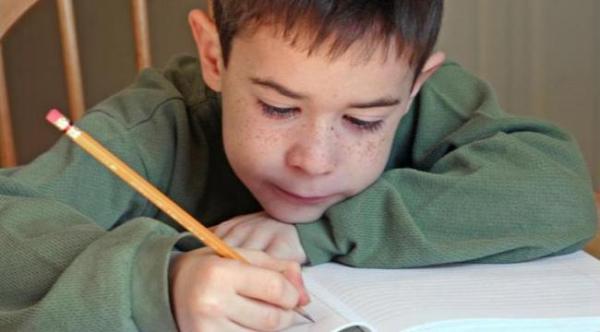Along with dyslexia, another of the most common language disorders in children is digraphy, also known as dysorthography or lexical dysgraphia.
 As a consequence of this disorder, the child has difficulties to write the words correctly from the spelling point of view, changing some letters for others that are phonetically similar, or writing words separated by syllables or several words joined. They will also have difficulty in spelling the words. In the following article we will explain what the causes and treatment of dysgraphia are, pay attention!
As a consequence of this disorder, the child has difficulties to write the words correctly from the spelling point of view, changing some letters for others that are phonetically similar, or writing words separated by syllables or several words joined. They will also have difficulty in spelling the words. In the following article we will explain what the causes and treatment of dysgraphia are, pay attention!
Index
- Causes of dysgraphia
- Types of dysgraphia
- Treatment of dysgraphia in children
Causes of dysgraphia
The causes of dysgraphia in children can be various, and although they cannot always be clearly determined, the most common are those listed below:
- That the child has developed in a deficient cultural environment, which does not stimulate or facilitate the child to correctly learn the use of the language.
- Communication problems.
- Defects in sight or hearing or deficiencies in their perception of space and time.
- Low intellectual performance.
- Poor articulation of phonemes, which translates into poor transcription of the same when writing them.
- Finally, it can also occur when the method used to teach the child to write is not the most appropriate.
Types of dysgraphia
Several types of dysgraphia are distinguished, such as:
- Semantics: when the child joins different words or separates the syllables of the same word.
- Dynamics: in this case, the child has grammatical difficulties, such as not correctly assigning gender and number to the different elements of the sentence.
- Visuospatial: occurs when the child exchanges letters that are written in a similar way, such as “b” for “d”, “m” for “n” or “p” for “q”, among others.
Treatment of dysgraphia in children
For the treatment of dysgraphia, in the first place, it is important to determine what type of dysgraphia is suffered, and once this is done, the child will be provided with methods that allow him to practice writing, paying special attention to the origin of this learning difficulty.
Faced with a case of dysgraphia, it is essential that both teachers, specialists and parents develop an individualized education program. This is important so that the child can overcome all those difficulties that prevent him from having good writing.
Some of the steps that can be taken at home to help a child with dysgraphia include the following:
- Do exercises that help the child prepare for the moment of writing. That is, before starting to write, it is convenient for the little one to do some relaxation exercises, such as taking deep breaths, shaking their hands, etc.
- Organize games that help strengthen their motor skills. A good example is making crafts with clay, as this will strengthen the muscles of the hand and improve coordination at the same time.
- It is important that parents write down all the difficulties that their child presents at the time of writing so that later teachers and specialists can find the patterns and the best strategies to improve this learning difficulty.
This article is merely informative, we do not have the power to prescribe any medical treatment or make any type of diagnosis. We invite you to see a doctor in the case of presenting any type of condition or discomfort.




